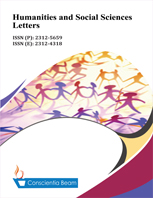Interactions among the primary causes of carbon dioxide emissions in selected south Asian countries: Does renewable energy mitigate carbon dioxide emissions?
DOI:
https://doi.org/10.18488/73.v12i4.3927Abstract
The primary aim of this study is to examine the relationship between economic growth (EG), financial development, renewable energy consumption and environmental pollution in South Asian countries (SAC). The “Autoregressive Distributed Lag (ARDL) model” applies panel data analysis from 1990 to 2021 in selected SAC. This study reveals that a 1 percent increase in financial development (FD) tends to increase 0.3356 percent of CO2 emissions. Renewable energy consumption (RE) essentially diminishes ecological contamination: a 1 percent expansion in RE will reduce 0.5878 percent of CO2. Expanded reception sources are related to a significant decrease in CO2 highlighting the capability of clean energy to advance manageable turns of events. The blunder rectification term remains at - 0.3741 with measurably critical outcomes which suggests that the speed of equilibrium is 37% to arrive at a drawn-out balance in SAC. We urge policymakers to find some kind of harmony between financial development and natural maintainability by advancing sustainable power projects and implementing stricter ecological guidelines. This study contributes to the literature by presenting empirical evidence on the environmental impact of economic and financial dynamics in a region experiencing rapid growth and development challenges.

